Premium Only Content
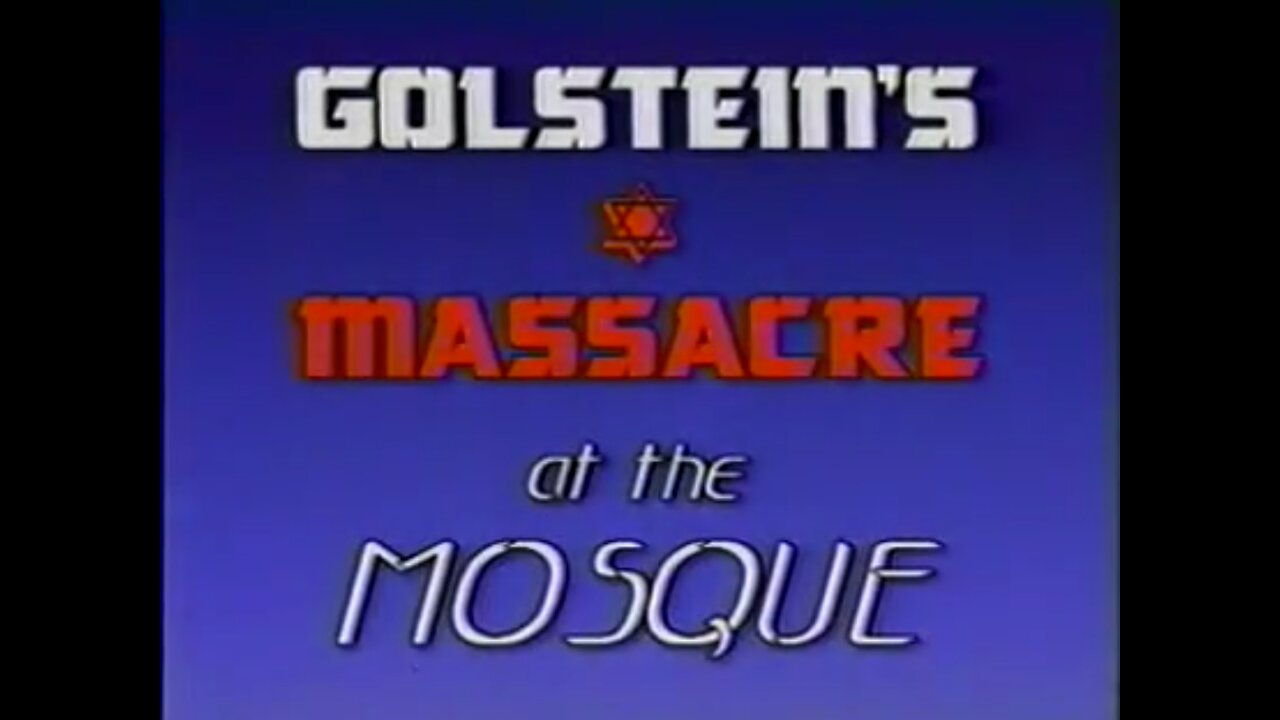
GOLDSTEIN'S MASSACRE at the MOSQUE (Cave of the Patriarchs 1994) Newsreel Documentary
Classification: Mass murderer
Characteristics: Orthodox Jewish - Member of the far-right Israeli Kach movement
Number of victims: 29
Date of murders: February 25, 1994
Date of birth: December 9, 1956
Victims profile: Muslims at prayer in the Ibrahimi Mosque
Method of murder: Shooting (IMI Galil assault rifle)
Location: Hebron, Palestine
Status: After being subdued with a fire extinguisher and disarmed, Goldstein was beaten to death
Mowed down dozens of Muslim worshipers with an automatic rifle as they knelt in prayer at a mosque.
Cracked over the head by a fire extinguisher hurled by someone in the crowd and then beaten lifeless.
Baruch Kappel Goldstein (Hebrew: ברוך גולדשטיין; December 9, 1956 – February 25, 1994) was an American-born Israeli physician who perpetrated the 1994 Cave of the Patriarchs massacre in the city of Hebron, killing 29 Muslims at prayer in the Ibrahimi Mosque (within the Cave of the Patriarchs) and wounding another 150 in a shooting attack.
Biography
Goldstein was born in Brooklyn, New York to an Orthodox Jewish family. He attended the Yeshivah of Flatbush religious day school and Yeshiva University. He received his medical training at Albert Einstein College of Medicine. He belonged to the Jewish Defense League (JDL), a militant Jewish organization founded by Rabbi Meir Kahane.
After emigrating to Israel, he served as a physician in the Israeli Defense Force, first as a conscript, then in the reserve forces. Following the end of his active duty, Goldstein worked as a physician and lived in the Kiryat Arba settlement near Hebron, where he served as an emergency doctor.
In the autumn of 1993, in recognition of his medical work, Goldstein received two citations from the Israeli Army. In January 1994, Major Dr Yitzchak Ashkenazi, the local medical officer of the district of Judea and Samaria recommended Goldstein for promotion to the rank of Major in the Israeli Army.
Cave of the Patriarchs massacre
On February 25, 1994, that year's Purim day, Goldstein entered a room in the Cave of the Patriarchs serving as a mosque, wearing "his army uniform with the insignia of rank, creating the image of a reserve officer on active duty" (Shamgar report). He then opened fire, killing 29 people and wounding 150 (A Time magazine article reported that Israeli officials counted 39 killed and Palestinians reported 52 killed).
Mosque guard Mohammad Suleiman Abu Saleh said he thought that Goldstein was trying to kill as many people as possible and described how there were "bodies and blood everywhere." After being subdued with a fire extinguisher and disarmed, Goldstein was beaten to death. According to Ian Lustick, 'by mowing down Arabs he believed wanted to kill Jews, Goldstein was reenacting part of the Purim story'.
Palestinian protests immediately followed the shooting, leading in the following week to the deaths of 25 Palestinians and five Israelis.
According to Aditi Bhaduri, writing in The Hindu, following the massacre, Israel imposed a two-week curfew on the 120,000 Palestinian residents of the city, while the 400 Jewish settlers remained free to move around.
Israeli Prime Minister Yitzhak Rabin telephoned PLO leader Yasser Arafat, and described the attack as a "loathsome, criminal act of murder". The Israeli government condemned the massacre, and responded by arresting followers of Meir Kahane, forbidding certain settlers from entering Arab towns, and demanding that those settlers turn in their army-issued rifles.
Treatment of non-Jews
Israeli press reports stated that Goldstein refused to treat non-Jews, even those serving in the IDF, and this was reflected in comments by his acquaintances.
Gravesite and shrine
Goldstein is buried across from the Meir Kahane Memorial Park in Kiryat Arba, a Jewish settlement adjacent to Hebron. The park is named in memory of Rabbi Meir Kahane, founder of the Israeli far-right political party Kach, a group classified by the United States and Israeli governments as a terrorist organization. Goldstein was a long-time devotee of Kahane.
The gravesite has become a pilgrimage site for those with extreme right-wing political views; a plaque near the grave reads "To the holy Baruch Goldstein, who gave his life for the Jewish people, the Torah and the nation of Israel."
In 1996, members of the Labor Party called for the shrine-like landscaped prayer area near the grave to be removed, and Israeli security officials expressed concern that the grave would encourage extremists.
In 1999, following passage of a law designed to prohibit monuments to terrorists, and an associated Supreme Court ruling, the Israeli Army bulldozed the shrine and prayer area set up near Goldstein's grave.
Cave of the Patriarchs massacre
The Cave of the Patriarchs massacre occurred when Baruch Goldstein, an Israeli settler and member of the far-right Israeli Kach movement, opened fire on unarmed Palestinian Muslim worshippers praying inside the Cave of the Patriarchs mosque in Hebron in the West Bank. It took place on February 25, 1994, during the overlapping religious holidays of Purim and Ramadan. Between 39 and 52 Muslims were killed and more than 100 others wounded. The attack ended when Goldstein was subdued and beaten to death by the survivors.
The attack set off riots and protests throughout the occupied territories, and an additional 19 Palestinians were killed by the Israeli Defense Forces within 48 hours of the massacre.
Israeli Prime Minister Yitzhak Rabin condemned the attack, describing Goldstein as a "degenerate murderer", "a shame on Zionism and an embarrassment to Judaism".
Goldstein was praised as a martyr by Jewish extremists in Hebron and his grave subsequently became a site of "pilgrimage" for his supporters.
Background
Baruch Goldstein, an Israeli settler originally from the United States, had previously been involved with the Jewish Defense League, a controversial extremist group which has been characterized by the Federal Bureau of Investigation as a terrorist organization, and by the Southern Poverty Law Center as an anti-Arab hate group. In 1981, Goldstein wrote in a letter to the editor published in the New York Times, that the disparity of birth rates, associated with a declining Aliyah, assures Israel of an Arab majority in Israel (70 years?) unless steps are taken to prevent this from occurring. Ceding the "West Bank" to the "Palestinians" would, therefore, not solve the problem... it would serve only to further jeopardize Israel's security and betray a Biblical trust.
The harsh reality is: if Israel is to avert facing the kinds of problems found in Northern Ireland today, it must act decisively to remove the Arab minority from within its borders.
After immigrating to Israel, Goldstein became involved with Kach, and had a strong personal relationship with Meir Kahane, the militant Jewish nationalist whose views, regarded by the Israeli government as racist, had caused his party to be banned from the Knesset in 1988. Kahane was assassinated in 1990 by Arab militant El Sayyid Nosair, and Goldstein reportedly swore to take revenge for the killing.
Massacre
The Israeli government divided the Cave of the Patriarchs into two sections, one for Jewish worshippers and the other for Muslim worshippers. At 05:00 a.m. on 25 February, 800 Palestinian Muslims passed through the east gate of the cave to participate in Fajr, the first of the five daily Islamic prayers. The cave was under Israeli Army guard, but of the nine soldiers supposed to have been on duty, four were late turning up, and only one officer was there.
Shortly afterwards, Baruch Goldstein, a Jewish resident of the Kiryat Arba settlement and member of the Kahanist movement, entered the Isaac Hall of the cave. He was dressed in his army uniform and carried an IMI Galil assault rifle and four magazines of ammunition, which held 35 rounds each. He was not stopped by the guards, who assumed that he was an officer entering the tomb to pray in an adjacent chamber reserved for Jews.
Standing in front of the only exit from the cave and positioned to the rear of the Muslim worshippers, he opened fire with the weapon, killing 29 people and injuring another 125.
Reports after the massacre were often contradictory or ambiguous. There was initial uncertainty about whether Goldstein had acted alone; it was reported that eyewitnesses had seen "another man, also dressed as a soldier, handing him ammunition." There were also reports that he had thrown grenades into the worshippers. Yasser Arafat suggested that the attack was the work of up to 12 men, including Israeli troops.
There were also various questions as to the Israeli guards outside the cave having opened fire; while Israeli military officials claim that no Israeli troops fired on the Palestinian worshippers, the New York Times reported that over 40 different Palestinian eyewitnesses, many of them confined to hospital beds with gunshot wounds and thus "unable to compare notes", all corroborated that three Israeli guards opened fire in confusion as the Muslims fled the shrine, with one firing into the crowd.
The testimony of various Israeli military officials was often contradictory. For instance, a Major General asserted that the guards had fired only in the air, but the guards themselves later testified to firing some shots "chest high". The guards' testimony was also at odds with the testimony of their ranking officer in claiming they had seen another Jewish settler enter the cave bearing arms.
Veneration of Goldstein
In the weeks following the massacre, hundreds of Israelis traveled to Goldstein's grave to celebrate Goldstein's actions. Some Hasidim danced and sang around his grave.[35] Although the government has said that those who celebrated the massacre represented only a tiny minority of Israelis, a New York Times report states that Israeli government claims may understate the phenomenon.
According to one visitor to the gravesite in the wake of the attacks, "If [Goldstein] stopped these so-called peace talks, then he is truly holy because this is not real peace." Some visitors kissed and hugged the gravestone, or even kissed the earth under which Goldstein was buried, declaring him a "saint" and "hero of Israel."
The phenomenon of the adoration of Goldstein's tomb persisted for years, despite Israeli government efforts to crack down on those making pilgrimage to Goldstein's grave site. The grave's epitaph said that Goldstein "gave his life for the people of Israel, its Torah and land".
In 1999, after the passing of Israeli legislation outlawing monuments to "terrorists," the Israeli army acted to dismantle the shrine that had been built to Goldstein at the site of his interment. In the years after the dismantling of the shrine, radical Jewish settlers continued to celebrate the anniversary of the massacre in the West Bank, sometimes even dressing up themselves or their children to look like Goldstein.
Palestinian public
Angry mobs began rioting in the aftermath of the massacre, which led to the deaths of 26 more Palestinians and 9 Israelis. As a reaction to the trauma induced in children in Hebron, the Palestinian Child Arts Center (PCAC), a non-governmental, non-profit organization was founded. The activities of the centre primarily involve the intellectual development of Palestinian children, and to reinforce a positive role for the child within Palestinian society and culture.
The first suicide bombing carried out by Palestinian militants was launched by Hamas' Izzedine al-Qassam Brigades in 1994, in retaliation for the massacre carried out by Goldstein. Eight people were killed and 34 wounded in the attack which took place in Afula on April 6, 1994, at the end of the forty day mourning period for Goldstein's victims.
Arab public and governments
In Amman, Jordan, 77-year-old British tourist Howard Long was stabbed by Arab protesters. The attacker, Khalid Husni Al-Korashi, was subsequently arrested and the Jordanian Interior Ministry called for its citizens to show calm and restraint in their response.
In March 1994, a Jewish American was shot to death by a Lebanese immigrant in New York City, in what prosecutors attributed to retaliation for the massacre.
Baruch Goldstein
In february 1994, Goldstein gunned down 29 Arab worshippers at al-Ibrahimi mosque. The shrine, the traditional burial place of the biblicial Abraham, is also revered as the Cave of the Patriarchs.
The segment of Shuhada Street - Martyrs' Street - opened today had been closed to Palestinian traffic except ambulances and municipal vehicles since February 1994, when Baruch Goldstein, a Jewish settler and immigrant physician from New York City, gunned down 29 Muslim worshipers in a Hebron mosque.
Israel feared that the street, which passes by heavily guarded compounds where 500 Jewish settlers live, would be the scene of Palestinian retribution. Palestinian traffic is still prohibited from the part of Shuhada Street directly in front of the settler enclaves.
Five years after the massacre, Israel opened the main road in the West Bank city of Hebron to Palestinian traffic that, strangely had been closed to Palestinians after the massacre even though the gunman was Jewish.
Dozens die in attack on Mosque, riots
Workshipers are mowed down by jewish settler
The Phoenix Gazette
February 25, 1994
An American immigrant armed with an automatic rifle mowed down dozens of Muslim worshipers as they knelt in prayer at a mosque today and then took his own life. The massacre ignited riots that spread throughout the occupied lands.
Hospital officials said 50 Palestinians were killed and 170 wounded in the mosque attack and subsequent riots, which spilled over into other West Bank towns, the Gaza Strip and the old walled city of Jerusalem. There was no estimate of how many people died inside the mosque.
At least 40 in West Bank mosque slain
Jewish man opens fire
The Boston Globe
February 26, 1994
HEBRON, Israeli-occupied West Bank -- With Palestinian worshipers kneeled in early morning prayer, a Jewish settler yesterday entered a packed mosque and opened fire with a rapid-firing assault rifle, killing at least 40 and wounding scores in one of the worst massacres of the century-long Arab-Jewish conflict.
'Massive rush' to only exit stymied by lone gunman
Mosque survivors carry out dead
The Arizona Republic
February 26, 1994
It was 5:45 a.m. in the Ibrahim Mosque and 800 Muslim worshipers, their heads bowed in silent dawn prayer, knelt in neat rows on red carpets.
Then shots rang out. The gunman was Baruch Goldstein, 38, a Brooklyn, N.Y.-born physician from Kiryat Arba, a nearby settlement. Wearing the olive-green uniform of an Israeli army major, he burst into the Ibrahim Mosque in the Cave of the Patriarchs, a shrine holy to both Jews and Muslims.
Mosque killer a zealot who hated arabs
Militant settler talked of slaying palestinians
The Phoenix Gazette
February 26, 1994
Three months ago, Baruch Goldstein seemed to capture the mood of the most militant West Bank settlers when he spoke of taking the law into his own hands.
"We are fed up, and with God's help we will establish the State of Judea," he told a radio interviewer. "And then we will deal with the Palestinians ourselves."
Doctor's suicide attack preceded by loving visit with his 4 children
The Arizona Republic
February 26, 1994
Baruch Goldstein lovingly rocked his children on his lap in synagogue, only hours before he slaughtered dozens of Palestinian worshipers in a Hebron mosque on Friday.
He was 38, a father of four, a doctor who treated trauma victims. But the New York-born Jewish settler knew how to hate.
Troops added to massacre, sources say
Mistook gunman for ally under attack
The Arizona Republic
February 27, 1994
Israeli TV reported Saturday that some of the victims of the massacre in the Mosque of Abraham were killed by Israeli soldiers who rushed in after a Jewish settler opened fire on praying Palestinian men and boys.
Mosque gunman's mother says she's proud of him
The Boston Globe
March 5, 1994
JERUSALEM -- The mother of Baruch Goldstein, the Jewish settler who massacred about 40 Palestinians in a Hebron mosque a week ago, says she is proud of her son.
"I always thought to myself, 'When would someone get up and do such a thing?' And in the end, my son did it," Miriam Goldstein told the weekly Shishi newspaper.
AP LOWERS DEATH TOLL AT MOSQUE TO 30 AFTER FAMILIES ARE QUERIED
The Boston Globe
March 6, 1994
JERUSALEM -- Thirty Palestinians were shot to death by Jewish settler Baruch Goldstein in the Hebron mosque massacre, rather than 39 as reported earlier, according to an Associated Press check conducted yesterday.
The revised figure brings the overall death toll of Palestinians killed in the massacre and in rioting since then to 55. In addition, three Israelis, including Goldstein, have been killed since the massacre.
Mosque killer aided, testimony suggests
Israeli guards tell of second settler
The Boston Globe
March 18, 1994
JERUSALEM -- In dramatic testimony that raised the possibility mass murderer Baruch Goldstein had an accomplice, two Israeli army guards yesterday said a second settler entered Hebron's Tomb of the Patriarchs on Feb. 25 shortly after gunman Goldstein did.
The guards testified that when Goldstein went into the tomb he was armed with a different gun from the Galil assault rifle found by his body after the massacre of Muslim worshipers. The second settler was carrying a Galil, they said.
Palestinian panel says troops fired at arabs
The Boston Globe
March 26, 1994
WASHINGTON -- A Palestinian inquiry into the Hebron mosque massacre will conclude that Israeli soldiers joined a Jewish settler in firing at Arab worshipers, the inquiry commission's chairman said yesterday.
Dr. Abdul Hafeez Ash-hab said that although the commission has no forensic or other physical evidence, several eyewitnesses have said they saw at least two soldiers in addition to Jewish settler Dr. Baruch Goldstein firing at people in the mosque.
Gunman in mosque acted alone, israeli report says
The Boston Globe
March 27, 1994
JERUSALEM -- Jewish settler Baruch Goldstein acted alone when he killed 29 Palestinian worshipers in a Hebron mosque in February, the Israeli commission of inquiry said in its report issued yesterday.
The report, praised by the government and rejected by Palestinian leaders and some on Israel's political left, did not call for criminal indictments or a reexamination of the military's procedures and standing orders.
Massacre at mosque
Dr. Baruch Goldstein was so blinded by enmity toward Arabs as to seem "batty" even to some of his fellow ultra nationalist, fervently religious neighbors in the Jewish settlement of Kiryat Arba, near Hebron in the West Bank.
About a year ago, he was heard to prophesy, in a synagogue no less, that "there will come a day when a Jew will get up and kill many Arabs for killing Meir Kahane" -- the Jewish zealot slain in New York City in 1990.
But this was no simple crazy act. Goldstein was a fanatic who took precise steps carefully calculated to reach a clear, if evil, goal. Presuming the American-born doctor intended to kill the Palestinian-Israeli peace process while avenging what he considered crimes against Jews, he chose time, place and method well to produce the most inflammatory effect possible. What better time than a Friday, the Islamic holy day, during Ramadan, the month of fasting and prayer, the same day as the Jewish feast of Purim, which commemorates the killing of the Persian royal minister Haman and his followers before they could carry out a planned massacre of Jews? What better place than the Ibrahim Mosque, where Muslims pray at the Tomb of the Patriarchs -- a site thought to contain the graves of the prophets Abraham, Isaac and Jacob, guaranteed to draw a wall-to-wall crowd of worshippers? What better method than to spray clip after clip of bullets into them without warning?
Which Goldstein did, with shocking efficiency. By 5:20 a.m. about 700 men, women and children, having risen in the dark to down a hurried breakfast, had jammed into the mosque for the dawn prayers that mark the start of the sunrise-to-sunset fast on each of the 30 days of Ramadan. Prayers had just begun; the worshippers were kneeling forward on plastic mats, touching foreheads reverently to the floor.
Mohammad Suleiman Abu Sarah, a mosque guard, saw Goldstein, well known to the Muslims as a troublemaker, approach. He was wearing a reserve captain's olive-green army uniform and a yarmulke and carrying a military-issue Galil assault rifle. As a Jew living in the occupied territories, he was entitled to carry the weapon wherever he went. Speaking good Arabic, "he asked to go inside during the prayers," said Abu Sarah. "I said it is forbidden. He said, 'I am the officer in charge here, and I must go in.' " With that, Goldstein swung his rifle butt into Abu Sarah's shoulder, knocking him down, and then rushed into the mosque.
Inside, Goldstein "didn't say even one word," reported Abu Sarah. He simply took up a position close to the backs of the worshippers in the rear row and opened fire. "I saw seven people die immediately," said Abu Sarah. "They were hit in the head, and their brains spilled out. It was total chaos. Everyone was running here and there to try and hide. The mosque was full of blood and wounded people, dead people."
A second guard, too scared to give his name, corroborated: "People started screaming and running away. Others who were hit were calling for help. People were swimming in blood. It was difficult to distinguish between the dead and the living, because everyone was covered in blood." Worshippers raced outside with bodies and jammed them into ambulances without pausing to sort the living from the dead. Ambulance driver Khaled Jaabry discovered only when he reached a local hospital that among the wounded he carried there were his own son and brother.
The firing inside the mosque continued for about 10 minutes, but the confusion outside the blood-soaked shrine lasted far longer than that. A particularly hot issue is whether some worshippers were shot by Israeli soldiers amid the chaos that Goldstein started. The second guard said he saw three men in Israeli army uniforms enter the mosque and shoot. Israeli TV, quoting army sources, gave a different version: two soldiers rushed into the mosque, saw worshippers starting to overpower Goldstein, interpreted the scene as an attack by Palestinians on a uniformed Israeli and opened fire. Nabil Shaath, the Palestine Liberation Organization's chief peace negotiator, claimed that eight worshippers were killed at the mosque entrance by Israeli soldiers. Even if true, these contentions would not necessarily point to the conspiracy that P.L.O. chief Yasser Arafat alleged; the few soldiers on the scene could simply have panicked as hundreds of frantic and bleeding Palestinians fled the carnage.
The Israeli army said a preliminary investigation indicated that Goldstein had acted alone, firing about 100 bullets; investigators recovered roughly that many casings from the mosque floor. The most the army would concede on Saturday was that when worshippers started pouring out of the mosque in great numbers, soldiers outside did fire -- but supposedly only warning shots in the air. But the charges were serious enough to initiate an official investigation. Military sources also said some Palestinians may have been trampled to death in the headlong rush to escape the bullets. All told, the total of dead and wounded last Friday exceeded even the number Goldstein could have hit, hard as he was trying. Israeli officials counted 39 people killed at the mosque; the Palestinians figured 52, plus 70 wounded.
Those figures leave out one more death: that of Goldstein. He was eventually cracked over the head by a fire extinguisher hurled by someone in the crowd and then beaten lifeless. He seems to have expected something of the sort: before leaving on his murderous foray, he sent goodbye notes to the town council of Kiryat Arba and to a colleague who had worked with him at the clinic there, indicating that he would not return. To the co-worker he wrote, "I enjoyed working as a doctor. Wishing for full redemption."
This was the doomsday scenario friends of the peace process had long imagined, anticipated, dreaded. All it would take was one crazy extremist from either side to open fire on an opposing crowd, and the Israeli-P.L.O. accords would fall apart.
Ever since the September peace accord was signed on the White House lawn, radical settlers, especially from the Kahane movement, have been loudly announcing their determination to take matters into their own hands to stop the delivery of land they consider their biblical birthright into the hands of the Palestinians. Settlers in Hebron have been caught on videotape firing repeatedly on Palestinian stone throwers. Jewish militants have stopped Palestinians on the roads and harassed them. The Israeli army for the most part has stood by, doing nothing to subdue them.
Yet the ramifications of the Hebron massacre may not be quite what was anticipated. Arafat spoke with justifiable outrage and a hint of reluctance to continue negotiating, but he kept his options open. Yitzhak Rabin made a point of sounding genuinely horrified when he called Goldstein "deranged," and he extended uncharacteristically warm offerings to the Palestinians while imposing unheard-of measures against the settlers. Bill Clinton, with unusual decisiveness, made merit out of mayhem and invited both parties to resume their talks in Washington immediately. The Hebron rampage may end up achieving the opposite of what Goldstein intended: speeding up the Israeli-P.L.O. peace negotiations rather than wrecking them.
That is still far from a certainty, since the massacre touched off stone throwing and rioting throughout the Israeli-occupied territories of the West Bank and Gaza Strip. Israeli soldiers firing on protesters killed 19, bringing the total for Friday and Saturday to somewhere between 58 and 71, depending on the toll in the mosque; another 250 people were wounded in the riots. Friday was the bloodiest day in the occupied Palestinian lands since Israel conquered them in 1967.
Displaced Palestinians demonstrated in Lebanon, Jordan and Syria, countries that are negotiating with Israel. In Israel proper there were outbreaks of stone throwing among Arabs in such cities as Nazareth and Jaffa, an ominous development: Israeli Arabs, while sympathetic with their brethren in the occupied territories, have hardly ever resorted to violence.
The air rang with the sort of cries for blood that can make continued talk of peace a hollow mockery. "Today is for the Jews, but tomorrow is for us," vowed a Palestinian on the sacred grounds of Jerusalem's Dome of the Rock. Even Freih Abu Middain, the normally moderate head of the bar association in the Gaza Strip, talked of future bloodshed: "Had this massacre happened after we had a Palestinian police force, we would be going into the Jewish settlements and killing at least 100 people there. Our people will not remain silent."
But in the fanatic Jewish precincts in Hebron, settlers danced in the streets and praised Goldstein's martyrdom. The Purim parades continued as if nothing had happened, and some residents of Kiryat Arba called his act "a great gift." One settler, stopped by a soldier as she tried to assault a Palestinian journalist, shrieked, "We should kill 500, not 50!"
-
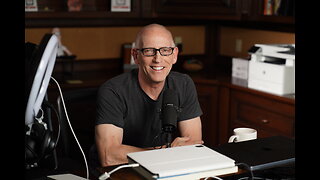 1:37:26
1:37:26
Real Coffee With Scott Adams
4 hours agoEpisode 2701 CWSA 12/26/24
60.6K55 -
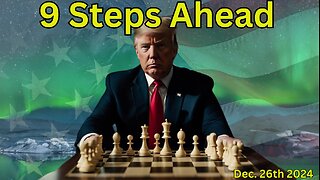 2:58:58
2:58:58
Wendy Bell Radio
8 hours ago9 Steps Ahead
96.4K120 -
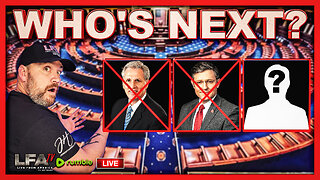 2:03:46
2:03:46
LFA TV
17 hours agoTIME FOR A NEW SPEAKER! | LIVE FROM AMERICA 12.26.24 11am EST
49.3K32 -
 1:40:22
1:40:22
Game On!
14 hours ago $4.74 earnedNFL Thursday Night Football Seahawks at Bears EXPERT Picks!
39.7K9 -
 1:50:54
1:50:54
xBuRnTx
4 hours agoWho's Ready for New Years!
29.2K1 -
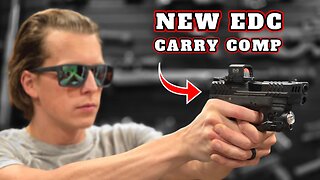 12:09
12:09
Tactical Advisor
16 hours agoSmith & Wesson Shield Plus Carry Comp
23.8K1 -
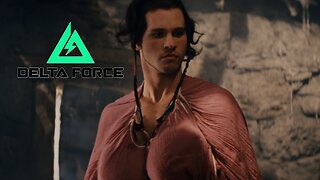 4:35:25
4:35:25
Father Russell
9 hours agoDelta Force | Not A Woman? | Mad Martigan Time
64.7K5 -
 3:29:42
3:29:42
BrookieMonster
16 hours ago $44.71 earnedChristmas Stream: Marvel Rivals with CallmeSeags 🎄
183K13 -
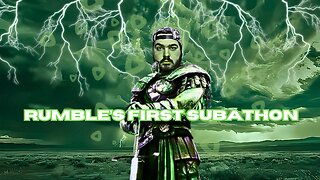 LIVE
LIVE
TheSaf3Hav3n
4 days ago| RUMBLES FIRST SUBATHON IS HERE!!! | DAY 4 |
293 watching -
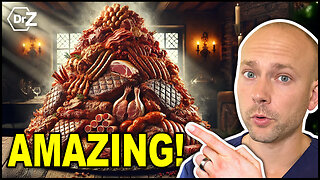 6:54
6:54
Dr. Nick Zyrowski
4 hours agoHIGH PROTEIN DIET Fixes Your Metabolism! - Weight Loss Not Required
19.4K5